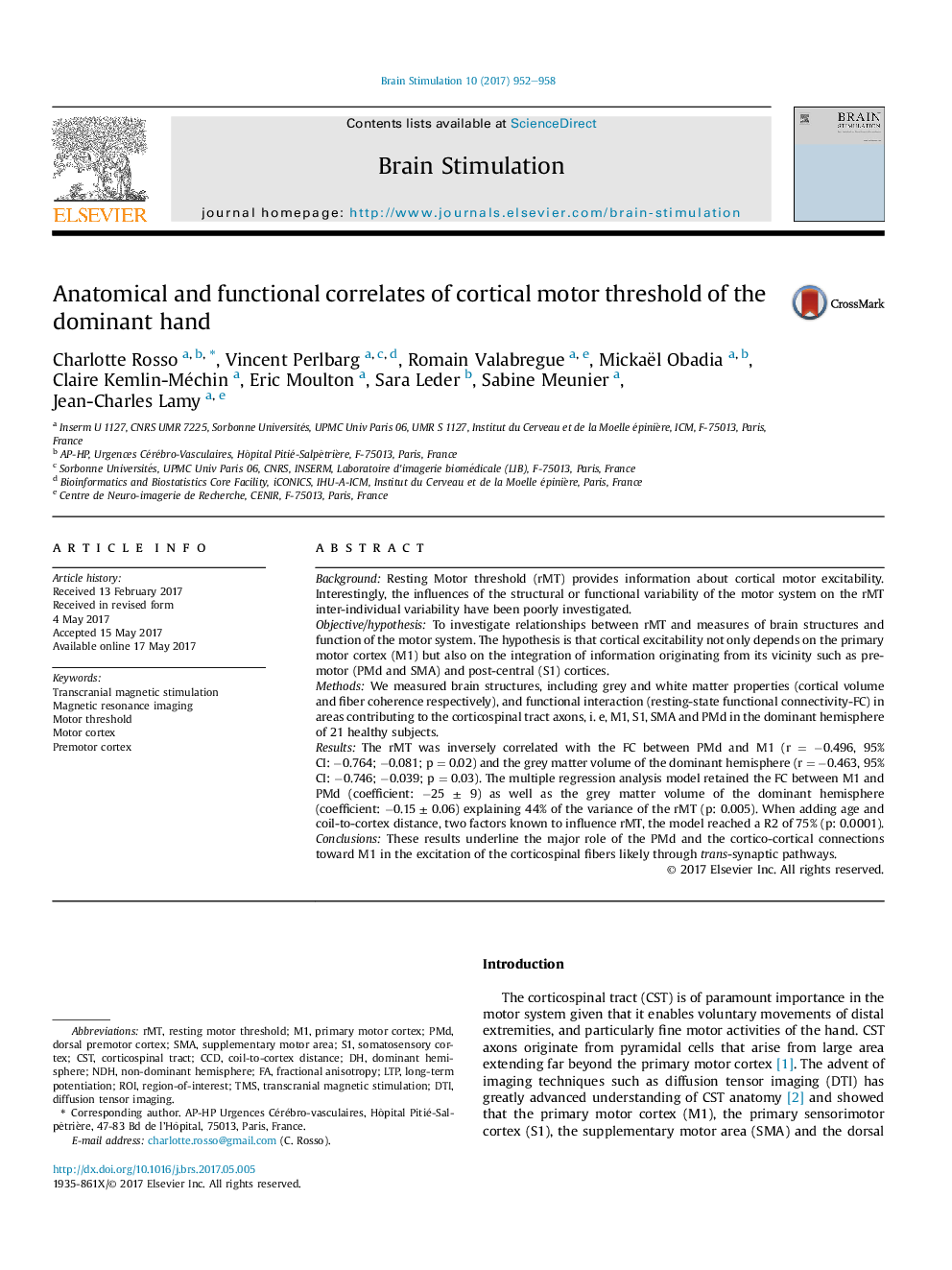| کد مقاله | کد نشریه | سال انتشار | مقاله انگلیسی | نسخه تمام متن |
|---|---|---|---|---|
| 5626799 | 1579646 | 2017 | 7 صفحه PDF | دانلود رایگان |
- Motor threshold reflects both anatomical and functional motor system properties.
- Premotor-motor interactions are key components of corticospinal excitability.
- White matter fibers coherence does not participate in motor threshold variability.
BackgroundResting Motor threshold (rMT) provides information about cortical motor excitability. Interestingly, the influences of the structural or functional variability of the motor system on the rMT inter-individual variability have been poorly investigated.Objective/hypothesisTo investigate relationships between rMT and measures of brain structures and function of the motor system. The hypothesis is that cortical excitability not only depends on the primary motor cortex (M1) but also on the integration of information originating from its vicinity such as premotor (PMd and SMA) and post-central (S1) cortices.MethodsWe measured brain structures, including grey and white matter properties (cortical volume and fiber coherence respectively), and functional interaction (resting-state functional connectivity-FC) in areas contributing to the corticospinal tract axons, i. e, M1, S1, SMA and PMd in the dominant hemisphere of 21 healthy subjects.ResultsThe rMT was inversely correlated with the FC between PMd and M1 (r = â0.496, 95%CI: â0.764; â0.081; p = 0.02) and the grey matter volume of the dominant hemisphere (r = â0.463, 95%CI: â0.746; â0.039; p = 0.03). The multiple regression analysis model retained the FC between M1 and PMd (coefficient: â25 ± 9) as well as the grey matter volume of the dominant hemisphere (coefficient: â0.15 ± 0.06) explaining 44% of the variance of the rMT (p: 0.005). When adding age and coil-to-cortex distance, two factors known to influence rMT, the model reached a R2 of 75% (p: 0.0001).ConclusionsThese results underline the major role of the PMd and the cortico-cortical connections toward M1 in the excitation of the corticospinal fibers likely through trans-synaptic pathways.
Journal: Brain Stimulation - Volume 10, Issue 5, SeptemberâOctober 2017, Pages 952-958
